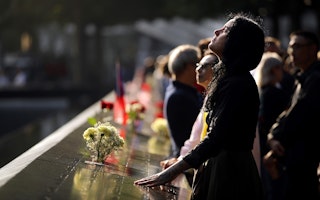Police Shootings Aren’t the Only Way the Justice System Fails Youth
By Luisa Taveras
I did not know Tamir Rice personally, but his death cuts through me like a knife. As the mother of a beautiful, intelligent, energetic 13-year-old boy, I cannot imagine the excruciating pain Tamir’s mother, family, and friends must be going through.
Tamir was playing with a toy gun in a park near his home in Cleveland, Ohio, on a Saturday afternoon in November. Somebody called 911. The police rushed to the park, and mistaking the toy for the real thing, the officer fired. Tamir was rushed to the hospital, but was soon pronounced dead.
In the wake of the non-indictments in the killings of Michael Brown and Eric Garner by police officers, many have raised their voices calling for reform of our nation’s policing and grand jury systems. But police use of force is not the only way our criminal justice system cuts short the lives of young men of color.
To honor Tamir’s life, we need to seek broader reforms that challenge the belief systems demonizing and dehumanizing our young people—belief systems built on suppression and stigma, on biases based on race, ethnicity, class, gender, and sexual orientation. These biases limit young peoples’ potential, stunting their opportunities for learning, growing, and maturing into adults capable of meaningful participation in our society.
The century-old experiment of subjecting youth to the justice system as society’s default means of holding them accountable for their transgressions, promoting their rehabilitation, and protecting the public has been a complete failure. Countless studies have demonstrated that justice-system interventions—such as arrest, prosecution, and incarceration—undermine the well-being of youth, subject them to inhumane treatment and unspeakable harm, and fail to promote public safety, given that recidivism rates remain as high as 75 percent in many jurisdictions.
Relegating youth to confinement in a juvenile or adult jail or prison increases their risk of victimization and suicide. In 2013 and 2014, several U.S. Department of Justice investigations revealed that hundreds of teenagers were raped or sexually assaulted during their stays in the country’s juvenile detention facilities, often by the staff put there to protect them. While 1.8 percent of 16- and 17-year-olds in adult prisons reported being assaulted by another inmate, nearly double that amount were abused by staff, with young gay and bisexual inmates facing even higher rates of abuse.
A 2014 DOJ investigation of Rikers Island and the New York City Department of Corrections cited extreme violence and excessive use of solitary confinement against adolescent inmates, and a “deep-seated culture of violence and a powerful code of silence among jail staff.”
Given these appalling facts, it’s perhaps not surprising that youth who come into contact with the justice system have a higher risk of suicide than their counterparts in the general population. The Office of Juvenile Justice and Delinquency Prevention reported in a 2009 study, Juvenile Suicide in Confinement: A National Survey [PDF], that the average age of suicide victims was 15.7 years, with more than 70 percent of victims aged 15 to 17. Clearly, our nation’s correctional facilities are dangerous places for youth, fail to promote their rehabilitation, and undermine public safety.
Our systems of justice are also deeply racist. Youth of color, especially those from impoverished neighborhoods, are subject to systematic surveillance and control, and to discrimination at every step of the judicial process. It is well documented that youth of color are over-represented in the juvenile justice system and often receive harsher punishments than their white counterparts for the same crimes.
The American Psychological Association’s 2014 research study, The Essence of Innocence: Consequences of Dehumanizing Black Children, found that black boys as young as 10 years old are often not accorded the same childhood innocence as their white peers, but rather are more likely to be mistakenly assumed to be older than they are, perceived as guilty, and subjected to police violence if suspected of a crime.
Sadly, these findings were borne out in Patrolman Loehmann’s description of Tamir after the shooting as a “black male, maybe 20 …” Twenty years old! Loehmann failed to see the sweet face of a 12-year-old boy. I doubt that any amount of training could have mitigated the racial animus displayed by Loehmann towards Tamir on that cold day in November.
The flaws in the system are plain to see. As Nell Bernstein notes in her acclaimed book, Burning Down the House: The End of Juvenile Prison, “We know that persisting with what doesn’t [work] wastes millions of dollars and destroys thousands of lives [and that] we are inflicting untold harm on the thousands of young people who pass through our [justice] systems each year. Yet we persevere, through cycle after cycle of scandal, reform, relapse, and repetition.”
The Justice Fund of Open Society Foundations’ U.S. Programs is committed to breaking these cycles through the Transformative Youth Justice Initiative. The initiative looks outside of the justice system for positive interventions designed to protect the right to childhood and support youth in a manner consistent with developmental and trauma research—and in ways that promote safety for all in the community.
Transformative youth justice rejects principles of suppression, control, punishment, and stigma. Instead, it is founded upon the belief that in order for youth to mature into healthy and whole individuals, they require compassion, guidance, and opportunities. Transformative youth justice by nature supports a win-win scenario, in which our youth and communities feel safe and thrive.
Until February 2016, Luisa Taveras was a program officer with the Justice Fund of U.S. Programs.


